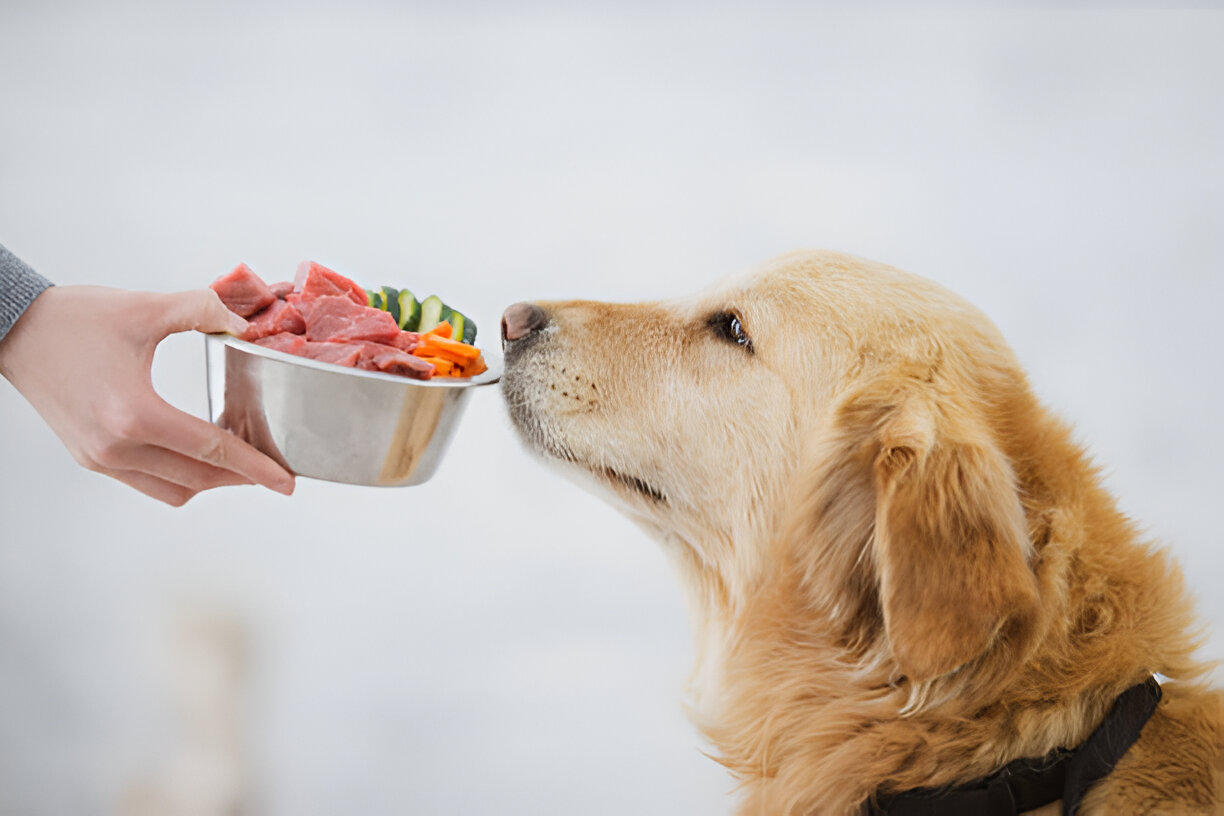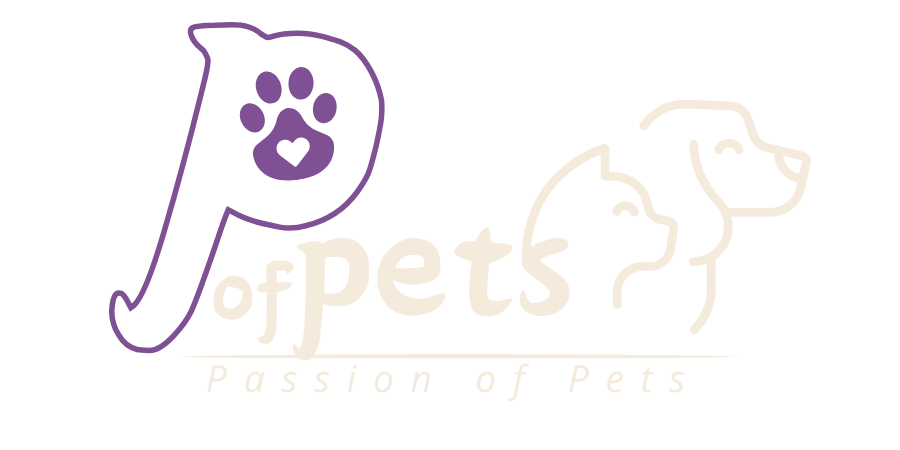How to Make Healthy Pet Food for Dogs
As a responsible pet owner, you want the best for your furry companion, and this includes providing them with nutritious meals. While commercial dog food can be convenient, making your own pet food allows you to control the ingredients, ensuring your dog gets a balanced and wholesome diet. Here’s a step-by-step guide to making healthy pet food for your dog at home.
Why Make Your Own Dog Food?
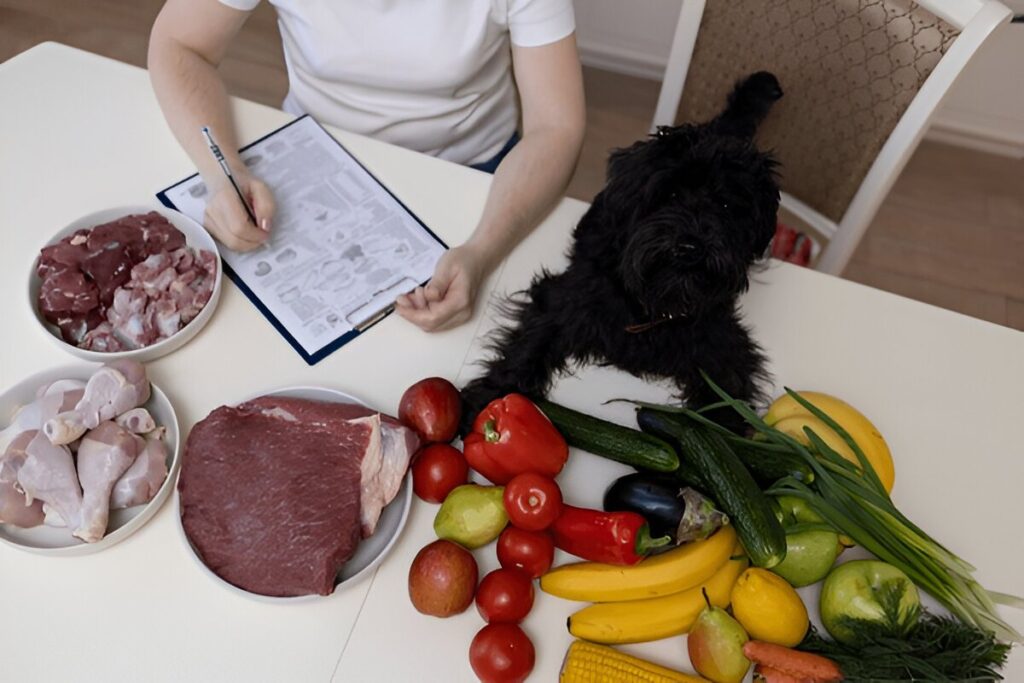
Customization
Making your dog’s food at home allows you to consider your dog’s individual needs and characteristics, including his age, size, breed, and level of activity. Consider the following:
- Puppies require a food higher in protein and fats to meet their growth demands.
- Mature dogs: recipes might be designed for joint health support, such as those containing omega-3 fatty acids.
- Active dogs may need richer calorie meals, while less active ones may need light, balanced meals. Alternatively, you can also feed according to your dog’s taste. This way, they will have meals that suit them nutritionally.
Quality Control –
When you cook for your dog, you will be in control of the ingredients used. This means that you can:
- Use fresh, whole ingredients that contain no artificial additives, fillers, or preservatives. Avoid low-grade by-products common in commercial dog foods.
- Maintain food safety through control of how the food is prepared and stored.
You feed your dog a wholesome diet that supports overall health and well-being using high-quality ingredients.
Allergy Management
Dogs with food sensitivities or allergies often react to commercial diets full of common allergens, like wheat, soy, dairy, or chicken. Homemade dog food allows you to identify and avoid irritating allergens and instead substitute with hypoallergenic options, such as lamb, venison, or rice, for better digestion and comfort.
- Use the elimination diet for identification of causes and change of recipes.
This helps the dog to have an improved shiny coat, itch less, and even have reduced gastrointestinal upset caused by allergens.
Nutritional Requirements for Dogs
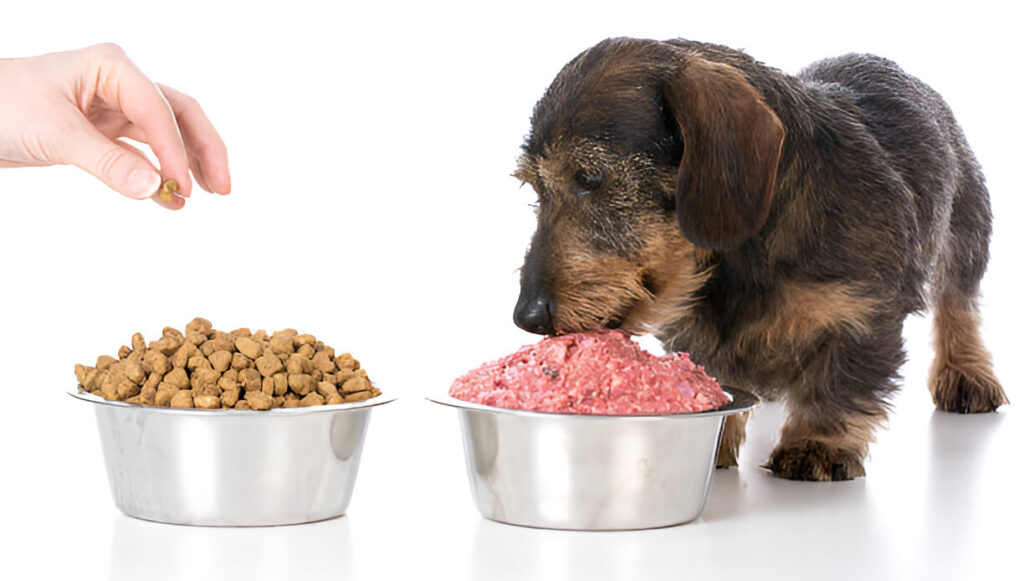
A balanced diet is critical to keeping your dog healthy and happy. Let’s dive into the key components:
Proteins
Proteins are essential for building and repairing tissues, maintaining a strong immune system, and supporting overall growth and development.
- Sources: Chicken, turkey, beef, fish, lamb, eggs, and even plant-based proteins like lentils can be used (in moderation).
- Tip: Make sure the meat is lean and well cooked to eliminate any harmful bacteria or parasites.
Fats
Fats are a concentrated source of energy and promote a shiny coat and healthy skin. They also contribute to brain and nerve function.
- Sources: Fish oil, flaxseed oil, chicken fat, or small amounts of coconut oil.
- Tip: Balance fat intake to avoid excessive calories while still supporting your dog’s energy needs.
Carbohydrates
Carbs are an excellent source of energy and aid in proper digestion. They also provide essential nutrients like fiber.
- Sources: Sweet potatoes, brown rice, quinoa, oats, or barley.
- Tip: Opt for whole, unprocessed carbs to maximize nutrient content and fiber.
Vegetables
Vegetables are rich in vitamins, minerals, and fiber. They’re great to fill out your dog’s diet with.
Good Options: carrots, peas, spinach, green beans, zucchini, broccoli (small amounts).
TIP: Boil or steam vegetables to make them easier to digest. Also, to avoid a chocking hazard, make sure they are easy to digest.
Some nutrients, like calcium and omega-3 fatty acids, may not be present in sufficient quantities in homemade diets.
- Calcium: Ground eggshells or bone meal can supplement calcium if your vet approves.
- Multivitamins: A balanced multivitamin can fill nutritional gaps, especially if you’re making homemade meals regularly.
- Tip: Always consult your veterinarian before adding supplements.
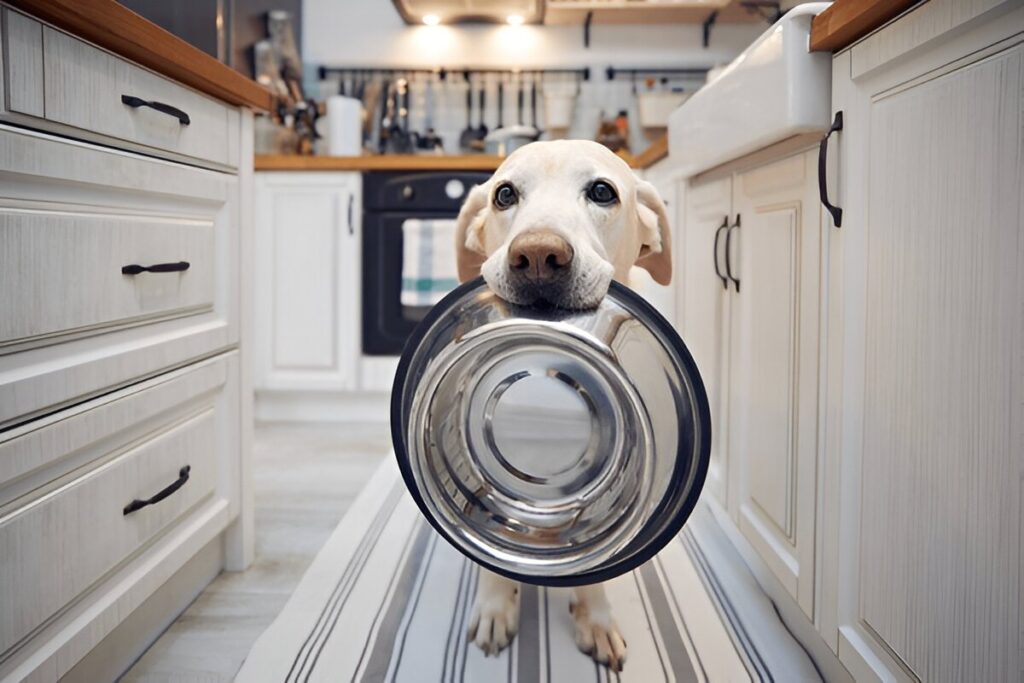
Ingredients to Avoid
Certain foods are toxic to dogs and should never be included in their diet:
- Chocolate: Contains theobromine, which can be fatal.
- Onions and Garlic: Damage red blood cells and can cause anemia.
- Grapes and Raisins: Can lead to kidney failure.
- Macadamia Nuts: Cause weakness, tremors, and vomiting.
- Excessive Salt or Sugar: Leads to dehydration, kidney issues, and obesity.
- Artificial Sweeteners (like xylitol): Extremely toxic, causing rapid blood sugar drops and potential liver failure.
Simple Dog Food Recipe
Here’s an easy, nutritious recipe to get you started with homemade dog food:
Ingredients
- 1 pound of ground turkey
- 1 cup of cooked quinoa (or substitute with brown rice)
- 1/2 cup of diced carrots
- 1/2 cup of green beans (fresh or frozen)
- 1 tablespoon of fish oil (optional, for omega-3 fatty acids)
Instructions
- Cook the Protein:
In a large skillet, cook the ground turkey over medium heat until fully browned. Drain any excess fat.
- Prepare the Vegetables: Steam the diced carrots and green beans until they’re tender but not mushy.
- Cook the Grain: Prepare the quinoa or brown rice according to package instructions.
- Combine Ingredients:
Mix the cooked quinoa, ground turkey, and steamed vegetables in a large bowl.
- Add Healthy Fats: Add fish oil (optional) to the mixture for essential omega-3 fatty acids.
- Cool and Serve:
Let the food cool completely before serving it to your dog. Store leftovers in an airtight container in the fridge for up to 3-4 days or freeze portions for longer storage.
Tips for Homemade Dog Food
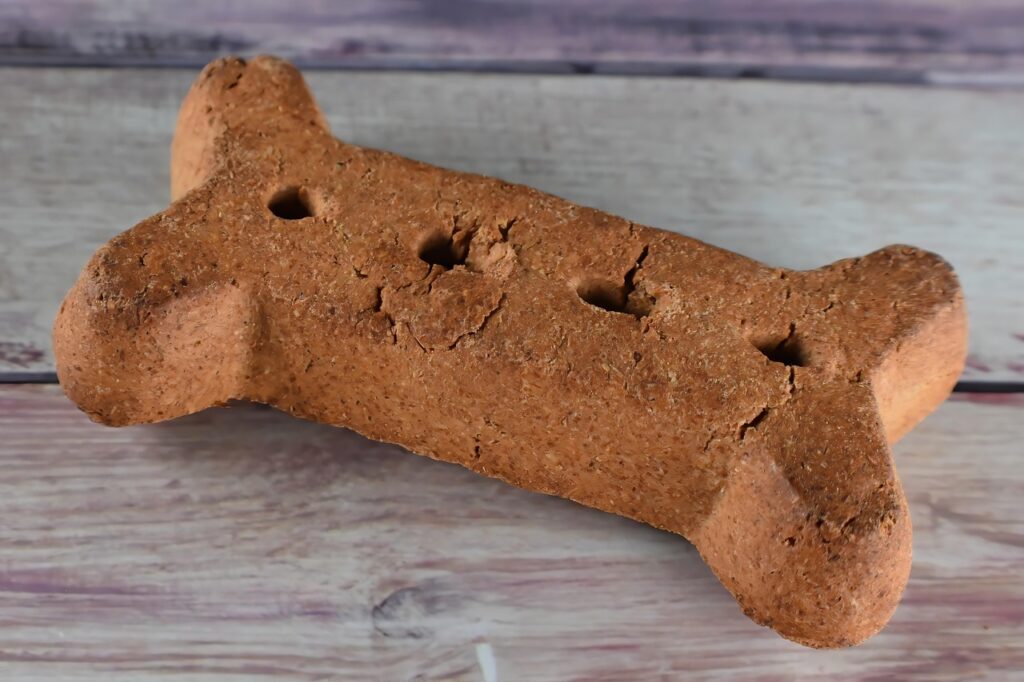
Image by Ray Shrewsberry • Ray_Shrewsberry from Pixabay
1. Consult Your Vet
Before making any dietary changes, it’s essential to discuss your dog’s nutritional needs with a veterinarian or a certified pet nutritionist.
- Nutritional Balance: Dogs require a mix of proteins, carbohydrates, fats, vitamins, and minerals. Your vet can guide you on the appropriate ratios based on your dog’s age, breed, weight, and activity level.
- Supplementation: Homemade diets often lack certain nutrients like calcium or essential fatty acids. Your vet might recommend supplements to ensure a balanced diet.
- Health Conditions: If your dog has medical issues like diabetes, kidney disease, or allergies, professional advice is crucial to tailor the diet accordingly.
2. Meal Prep and Storage
Cooking in batches can save time and effort, making homemade feeding more practical.
- Batch Cooking: Prepare large quantities of food and divide them into daily portions.
- Freezing: Store portions in freezer-safe containers or bags to preserve freshness. Defrost them as needed to ensure your dog always has a healthy meal ready.
- Labeling: Clearly mark containers with the preparation date to keep track of freshness and avoid spoilage.
3. Monitor Your Dog
Keep an eye on your dog’s health and adjust their diet as needed.
- Weight: Weigh your dog regularly to ensure they’re maintaining a healthy weight. Adjust portion sizes if they’re gaining or losing weight unexpectedly.
- Energy Levels: A well-balanced diet should keep your dog’s energy up for play, walks, and other activities. If they seem lethargic, it may be a sign of a problem with the diet.
- Coat Condition: A shiny, healthy coat is often a sign of a well-balanced diet. If your dog’s coat becomes dull or they start shedding excessively, it may indicate a nutrient deficiency.
- Stool Quality: Your dog’s digestion can say a lot about their diet. Keep an eye out for significant changes in the consistency, frequency, or color of their stool.
Additional Tips
- Use High-Quality Ingredients: Choose fresh, human-grade ingredients free from harmful additives or preservatives.
- Avoid Toxic Foods: Be aware of foods that are toxic to dogs, such as chocolate, onions, garlic, grapes, raisins, and certain artificial sweeteners like xylitol.
- Rotate Proteins: Include a variety of protein sources (chicken, beef, fish, etc.) to provide a diverse nutrient profile.
Would you like help creating specific recipes or learning about recommended supplements?
Final Thoughts
Making your own dog food can be a rewarding experience that strengthens the bond between you and your pet. By prioritizing fresh, wholesome ingredients, you’re ensuring your dog enjoys a long, healthy, and happy life. With a bit of effort and love, you can create meals that cater perfectly to your pup’s needs.
Yuns Legdm is a passionate advocate for pet care and the founder of this website, dedicated to providing valuable information for fellow pet lovers and veterinary professionals worldwide. With a deep love for animals, Yuns created this platform to connect passionate pet owners with expert insights from veterinarians around the globe.
This website grows with you—the passionate pet owners and veterinary experts—creating a trusted space where knowledge, experience, and love for animals come together. Whether you’re seeking advice on pet health, nutrition, or general well-being, this platform is here to support you on your journey of responsible and loving pet care.

